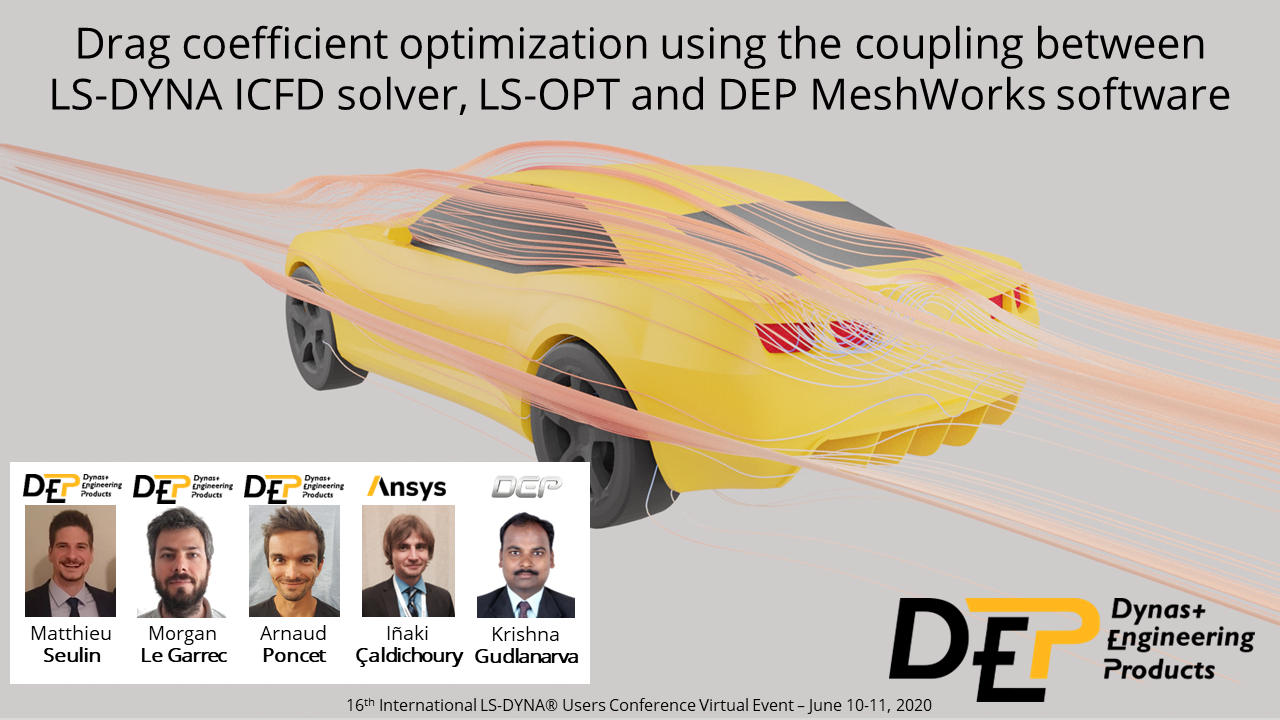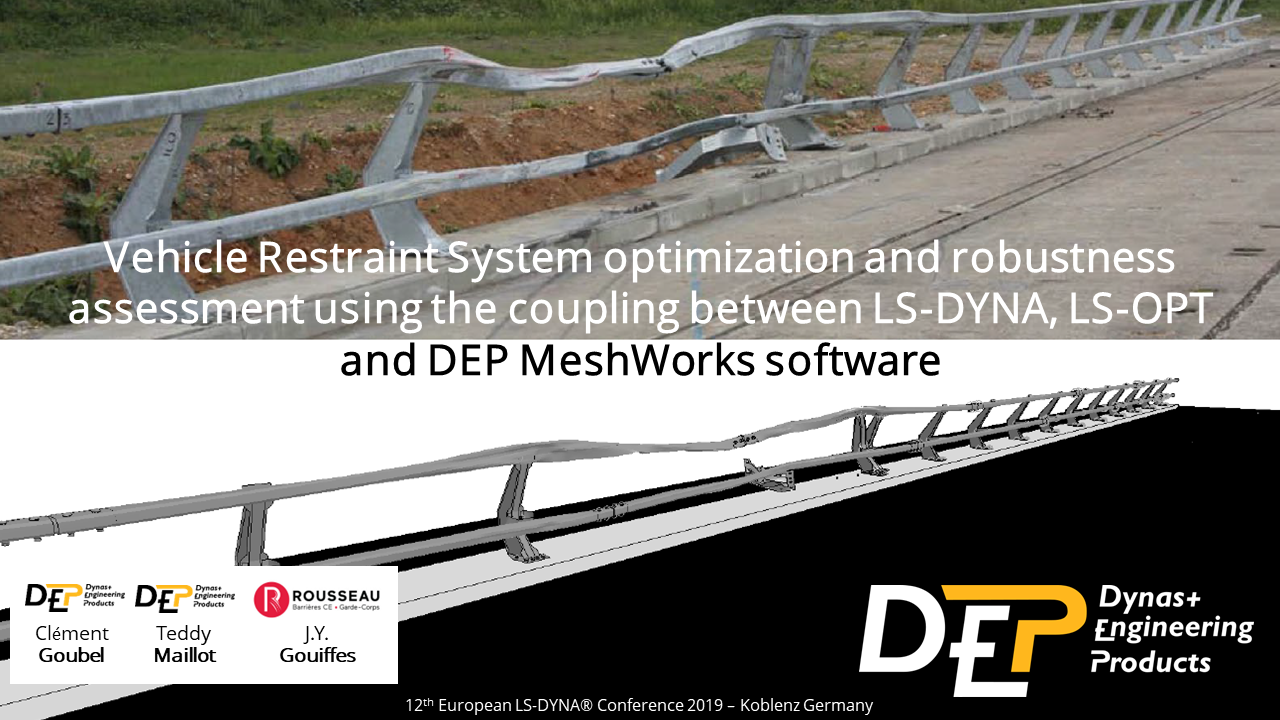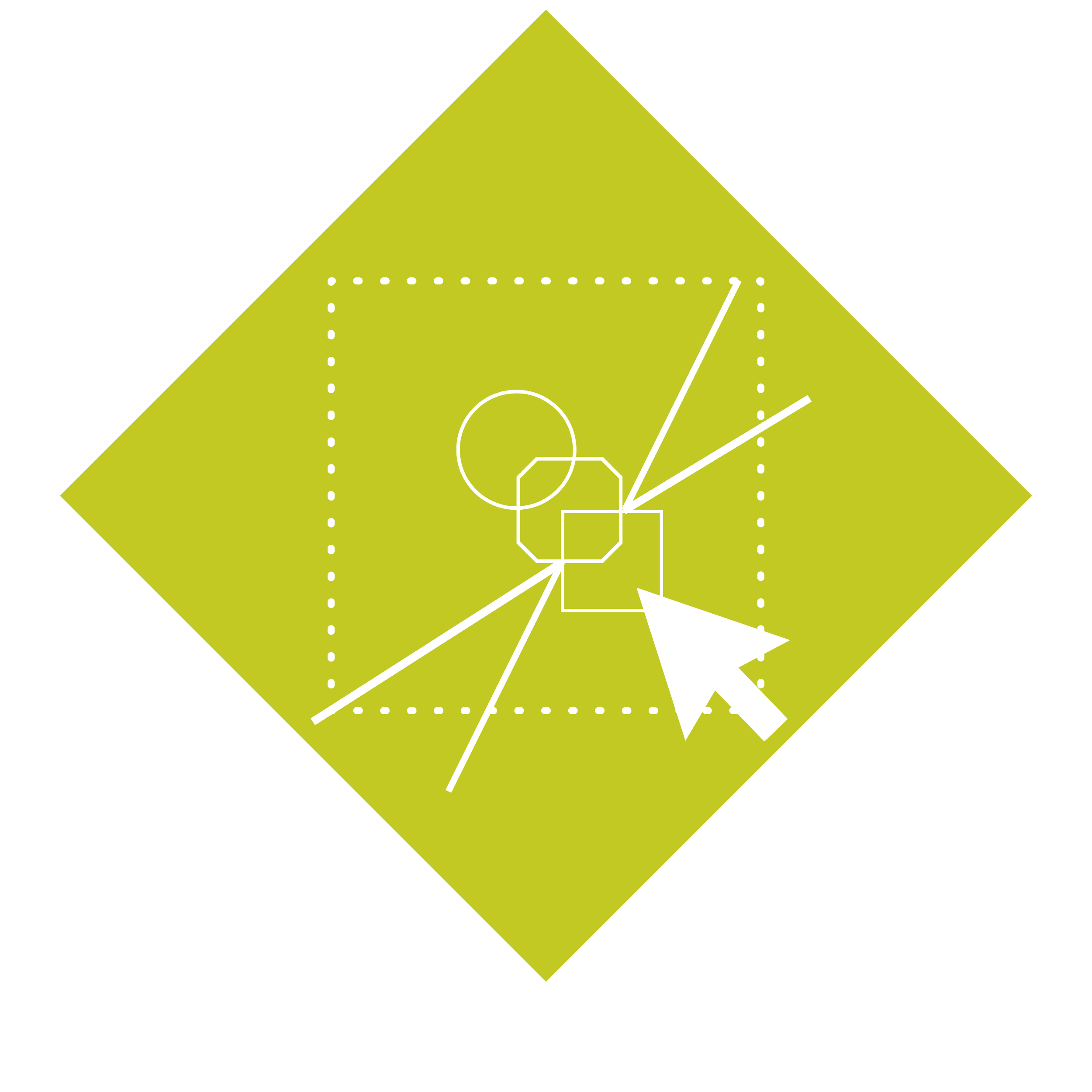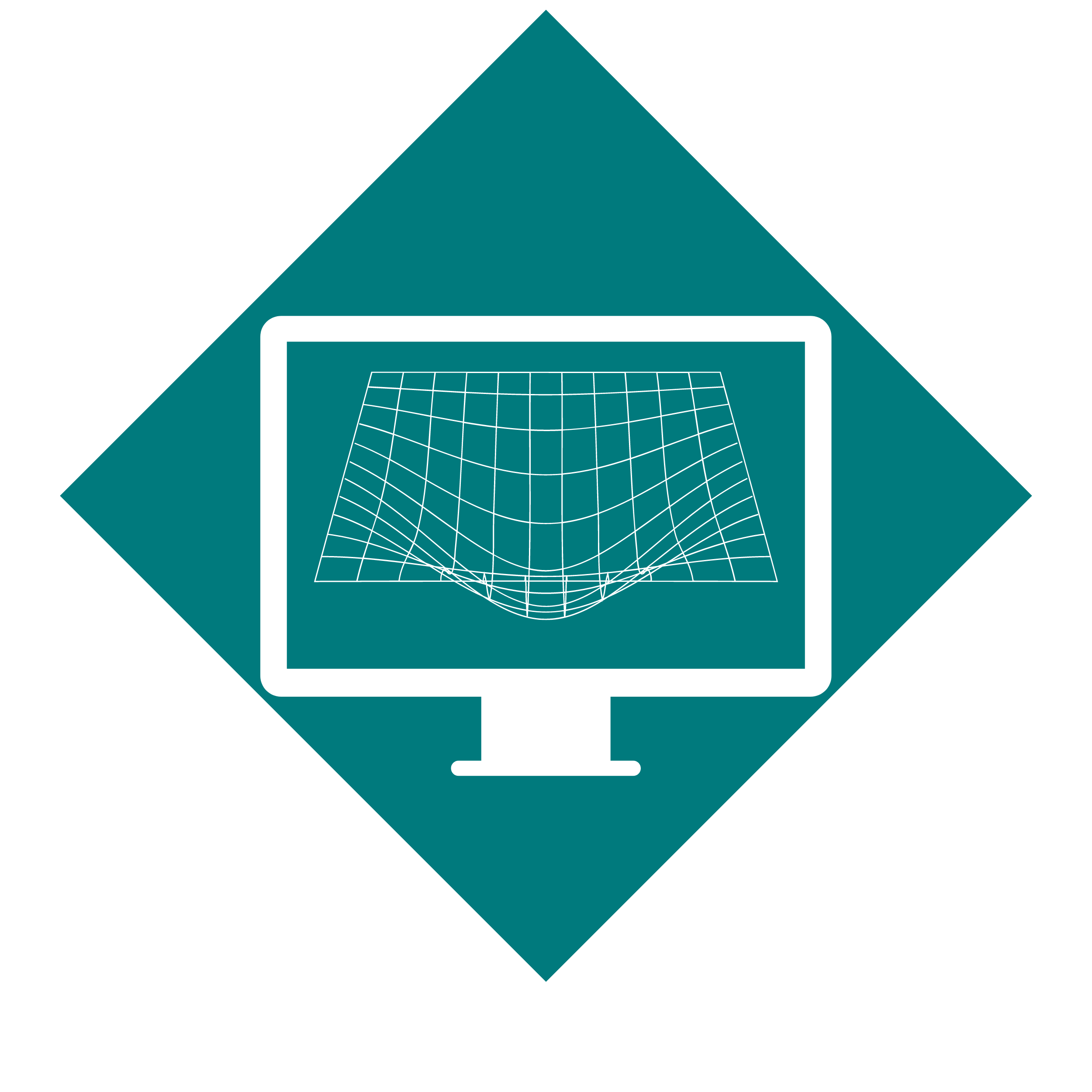Technical Publications
At Dynas+ Engineering Products, we thrive on innovation and excellence in numerical simulation (CAE). Our collection of scientific papers, presented at international conferences, showcases our commitment to advancing Computer-Aided Engineering (CAE) through cutting-edge methodologies in meshing, optimization, design, and analysis.
Authored by our expert CAE engineers and in collaboration with industry partners, these research insights reflect our core values of quality, respect, and time-saving innovation. Explore our contributions to the field of CAE and connect with us to discuss collaborations, services, or further details.



Drag Coefficient Optimization for a Sports Car using the coupling between LS-DYNA ICFD Solver, LS-OPT and DEP MeshWorks software
Authors:
-
M. Seulin, M. Le Garrec, A. Poncet (Dynas+ Engineering Products)
-
I. Caldichoury (Ansys LST)
-
K. Gudlanarva (Detroit Engineered Products)
16th International LS-DYNA Users Conference
Abstract:
Vehicle aerodynamics are paramount in enhancing a car's dynamic behavior, boosting performance, and slashing fuel consumption. While wind tunnels have long been a staple in aerodynamics study, numerical simulations are now emerging as an indispensable tool, enabling an increase in design experimentation while saving both cost and time.
In the intricate process of optimizing a car's global aerodynamics, CFD engineers must take into account numerous factors. The complexity of a vehicle necessitates a fine balance between multi-physical requirements, including design aesthetics, crash safety, weight, vibrations, noise, performance, manufacturing design, and more. This delicate equilibrium must align with the initial specifications to discover the most efficient compromise.
Dynas+ Engineering Products, in close collaboration with ANSYS-LST and DEP, is actively engaged with automakers worldwide on various aerodynamic applications. Innovations in this field are often kept under wraps until shared in conferences, years later. This paper seeks to unveil the current innovative technologies and methodologies used in aerodynamic applications, utilizing open-source sports car data.
Central to most aerodynamic studies, including the present work, is the goal of reducing the aerodynamic drag coefficient of the model. This paper showcases a design optimization performed on the initial design with the advanced morphing capabilities of DEP MeshWorks©, in conjunction with LS-OPT© and the Incompressible Computational Fluid Dynamics (ICFD) solver LS-DYNA©.
Vehicle Restraint System optimization and robustness assessment usign the coupling between LS-DYNA, LS-OPT and DEP MeshWorks software
Authors:
- C. Goubel, T. Maillot, V. Lapoujade, M. Seulin, N. Van Dorsselaer (Dynas+ Engineering Products)
- J.Y. Gouiffes (ROUSSEAU Equipements)
12th European LS-DYNA Conference 2019, Koblenz, Germany
Abstract:
Road safety structures are vital components in modern transportation, marked by the European Commission, and subject to rigorous crash testing. The performance in these tests has significant marketing implications for manufacturers and is influenced by stochastic variations in factors like raw material properties, test conditions, and vehicle design.
For decades, numerical simulation has aided in the design of road safety devices. However, the substantial variability in factors such as material characteristics, ground connections, impact conditions, and more often leads to discrepancies between simulated predictions and actual test results.
This paper introduces an innovative approach to overcome these challenges by employing advanced morphing capabilities within DEP MeshWorks, coupled with LS-OPT and LS-DYNA software. This synergy allows for efficient management of complex constraints induced by various impactors, such as light vehicles, buses, and trucks, enabling the quick and automated definition of optimal design.
The first part of the paper delves into this new methodology, shedding light on how it simplifies the intricate process of designing road safety structures. The second part emphasizes the importance of additional sensitivity studies using LS-OPT / LS-DYNA. This approach facilitates a better assessment of the variability in device response due to dispersions, empowering designers to evaluate failure risks more accurately during mandatory standard tests.
If you are a road safety engineer, designer, or involved in transportation safety standards, this paper by Dynas+ Engineering Products, utilizing DEP MeshWorks, LS-OPT, and LS-DYNA, offers valuable insights into a cutting-edge approach to road safety structure design and testing.
Multi-objective optimization approach for biomedical stent using parametric optimization of DEP MeshWorks software
Authors:
- Perumal Balu, Amarnath Venkata Golosu (Detroit Engineered Products)
- Matthieu Seulin (Dynas+ Engineering Products)
12th European LS-DYNA Conference 2019, Koblenz, Germany
Abstract:
Stent deployment for cardiovascular disease treatments is a multifaceted process that demands precision in terms of final stent diameters, minimalistic plastic strain, and fatigue life. The balancing act between achieving an exact dilation diameter and controlling plastic strain values is contingent on various factors such as stent geometry design, cross-section, material, crimping, and expansion diameter.
This scientific paper delves into an efficient stent finite element (FE) modeling and parametric optimization method, employing DEP MeshWorks' cutting-edge stent rolling and parametric tool, along with renowned LS-DYNA and LS-OPT optimization tools. The study extends to integration with ABAQUS and I-SIGHT as well. Through a Design of Experiments (DOE) approach, controllable design and deployment process parameters are meticulously explored, allowing for optimum random sampling. The robust parametric tool facilitates the generation of innovative designs, which are subsequently analyzed and optimized using LS-DYNA's explicit solver. The final result is a high-performing, optimized stent design that fulfills the stringent diameter criteria without exceeding minimal plastic strain limits, and also complies with foreshortening and flexibility constraints.
If you're in the medical device industry, seeking to leverage advanced finite element modeling in stent design, or researching cardiovascular treatments, this paper by Dynas+ Engineering Products utilizing DEP MeshWorks offers invaluable insights.
For more information or specific questions related to these scientific papers, please don't hesitate to contact us or email us directly at email@depeurope.com. Our team of experts is here to assist you!






